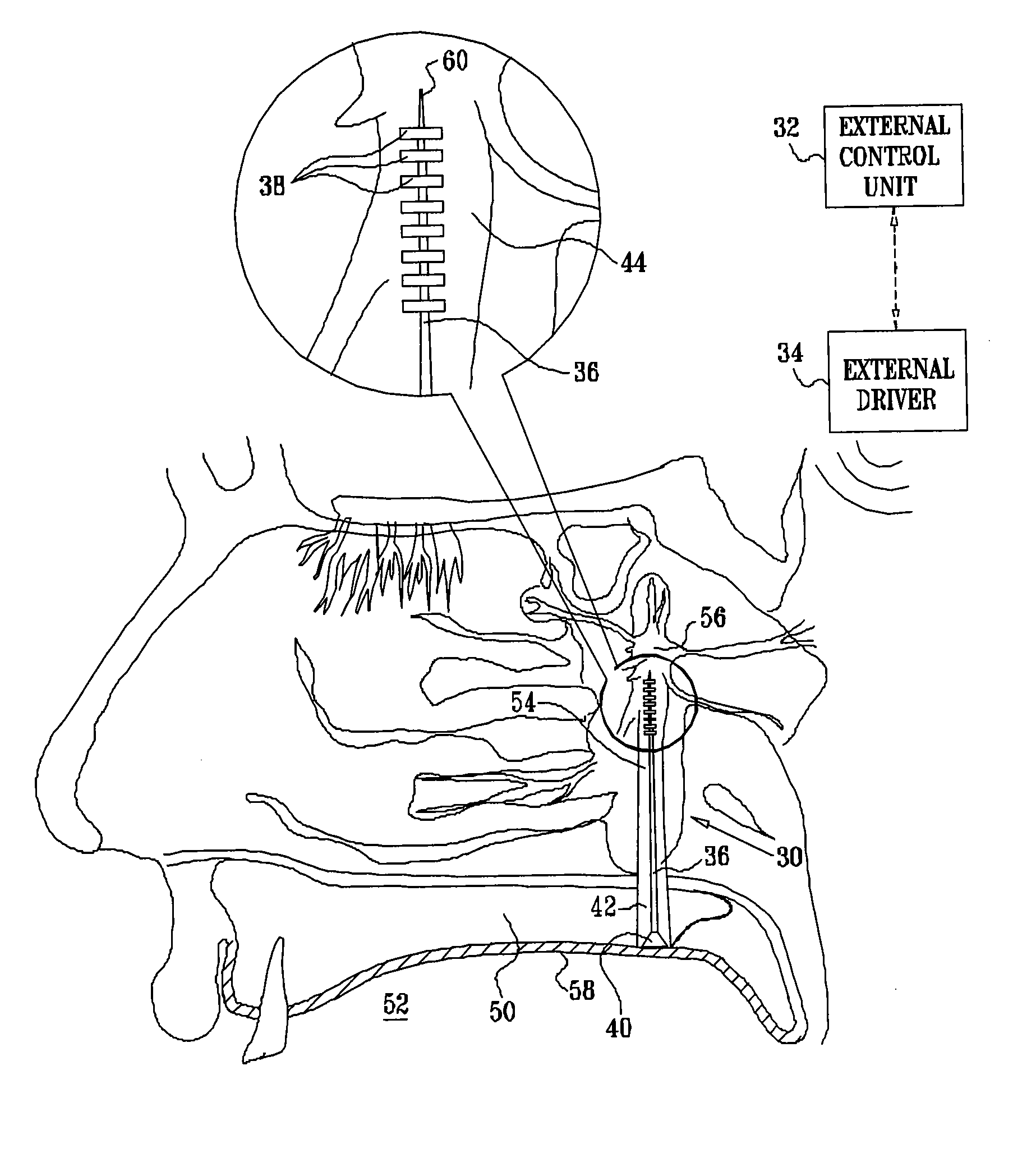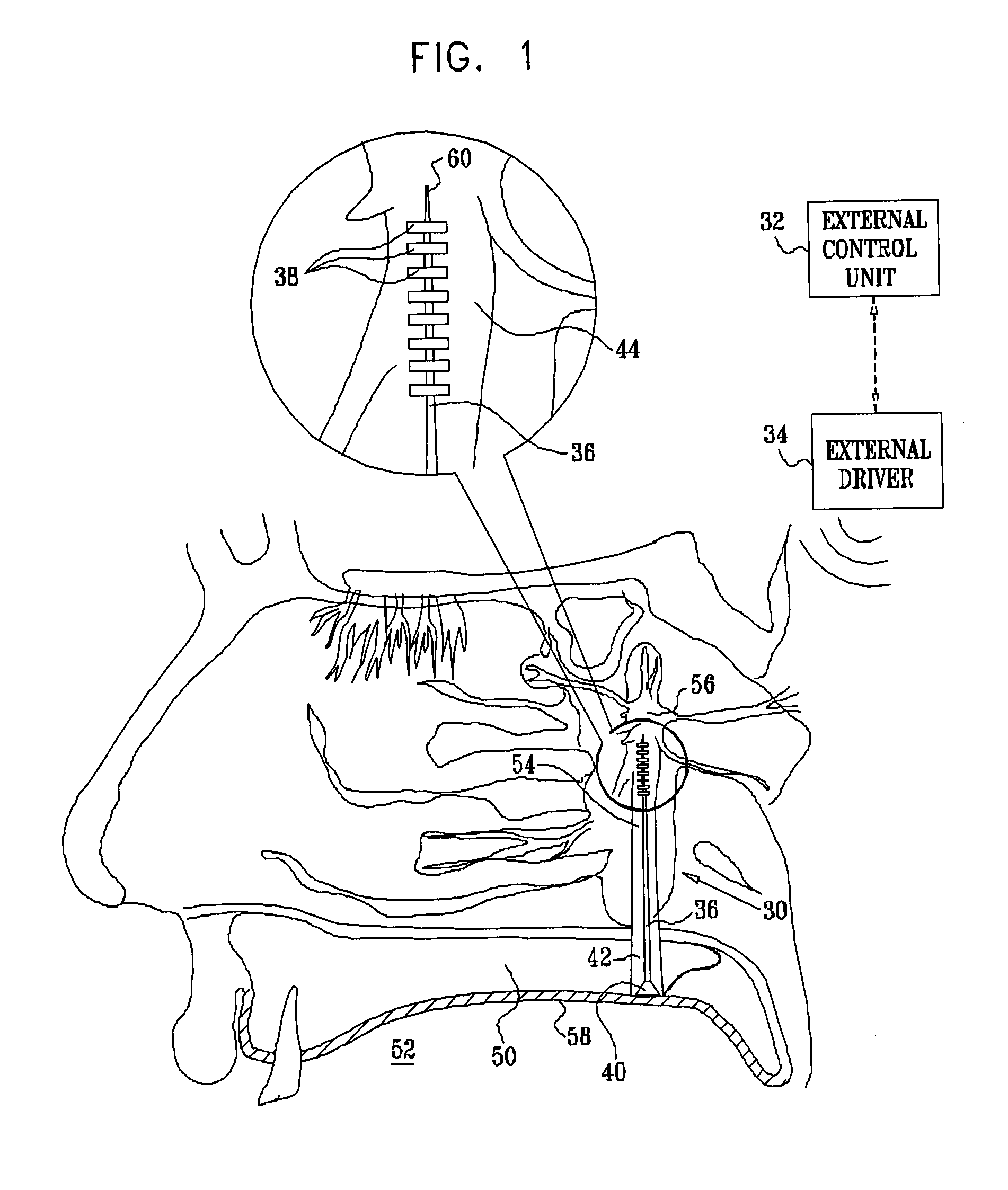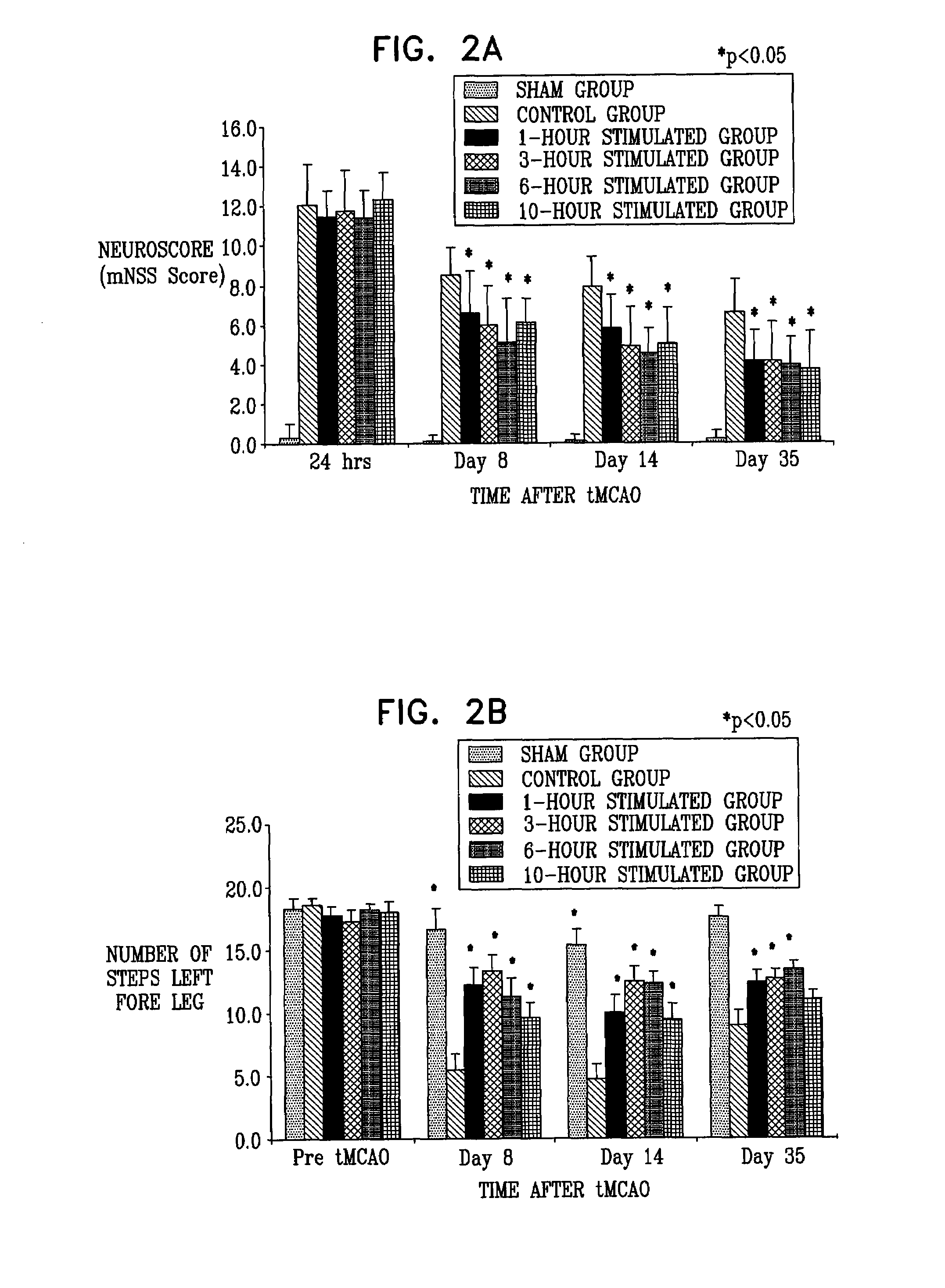Spg stimulation for enhancing neurogenesis and brain metabolism
a brain and spleen technology, applied in the field of brain stimulation, can solve the problems of slow neuronal cell death in this area, insufficient blood supply to a localized area of the brain in the center of the infarction, and gradual neuronal death, so as to improve enhance the recovery of the metabolic state of the brain area, and improve the recovery from the condition
- Summary
- Abstract
- Description
- Claims
- Application Information
AI Technical Summary
Benefits of technology
Problems solved by technology
Method used
Image
Examples
Embodiment Construction
[0117]FIG. 1 is a schematic illustration of a neural stimulation system 20, in accordance with an embodiment of the present invention. System 20 typically comprises an implantable neural stimulator 30, an external control unit 32, and, for some applications, an external driver 34. Stimulator 30 comprises an elongated support element 36, one or more electrodes 38 fixed to the support element in a vicinity of a distal end thereof, and circuitry 40 coupled to the support element in a vicinity of a proximal end thereof. Circuitry 40 typically comprises a wireless coupling element (which typically comprises a coil, and additional elements, such as one or more rectifiers, capacitors, amplifiers, or filters. One or more leads (not shown in FIG. 1), which pass along, through, or around support element 36, couple electrodes 38 to circuitry 40. Alternatively, the leads function as the support element, i.e., the support element does not comprise any structural elements in addition to the leads...
PUM
 Login to View More
Login to View More Abstract
Description
Claims
Application Information
 Login to View More
Login to View More - R&D
- Intellectual Property
- Life Sciences
- Materials
- Tech Scout
- Unparalleled Data Quality
- Higher Quality Content
- 60% Fewer Hallucinations
Browse by: Latest US Patents, China's latest patents, Technical Efficacy Thesaurus, Application Domain, Technology Topic, Popular Technical Reports.
© 2025 PatSnap. All rights reserved.Legal|Privacy policy|Modern Slavery Act Transparency Statement|Sitemap|About US| Contact US: help@patsnap.com



